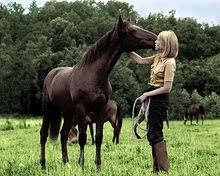
Rosie recently received an email from King Arthur flour about pane bianco and I knew I would be making this bread. It's a savory bread filled with cheeses, oven-roasted tomatoes, garlic, and basil,
just to mention a few of my favorite things.
Pane Bianco
Dough:
3 cups King Arthur Unbleached Bread Flour
1 package yeast
1 1/4 tsp kosher salt
1 egg
1/4 cup lukewarm skim milk
1/4 cup lukewarm heavy cream (Or 1/2 cup of whole milk. I use what I have and I never have whole, but always have skim and cream.)
1/3 cup lukewarm water
3 TB olive oil
Filling:
3/4 cup Italian-blend cheeses, grated
1/2 cup oven-roasted tomatoes (You could use oil-packed sun-dried tomatoes.)
8 cloves garlic, roasted (Recipe didn't call for roasted garlic, but I love the mild flavor when roasted.)
1/3 cup chopped fresh basil
For the filling:
Heat oven to 400 degrees. Seed and juice tomatoes, then slice and place on foil-lined baking sheet along with garlic cloves. Drizzle and coat with olive oil. Season with kosher salt and freshly ground pepper. Bake about 30 minutes, until cloves are soft. Let cool, then peel skin off tomatoes. It comes off easily.
To make the dough:
Combine all dough ingredients in a food processor and pulse until it forms a sticky ball. Turn out onto lightly floured surface and knead about 5 minutes until smooth and elastic. I always set a timer when kneading because 5 minutes is longer than you think. Lightly sprinkle extra flour if the dough sticks. Place dough in a lightly oiled bowl, cover, and let rise until doubled.
When doubled, flatten dough and roll/pat into a 22 x 8 1/2-inch rectangle.
Squeeze garlic paste out of skins evenly onto rectangle and spread tomatoes, basil, and cheese mixture on dough.
Starting with the long edge, roll the dough into a log. Pinch edges to seal and place seam-side down on lightly oiled baking sheet. Using kitchen shears, start 1/2 inch from one end and cut the log lengthwise down, 1 inch deep, to within 1/2 inch of the other end. Keeping cut side up, form an "S" shape, tucking both ends under the center to create a "figure 8." Pinch ends to seal. Cover and let rise until doubled.
Heat oven to 350°. Bake 30-35 minutes, tenting with foil halfway through to prevent over-browning. Remove from oven and set on rack to cool.
1 package yeast
1 1/4 tsp kosher salt
1 egg
1/4 cup lukewarm skim milk
1/4 cup lukewarm heavy cream (Or 1/2 cup of whole milk. I use what I have and I never have whole, but always have skim and cream.)
1/3 cup lukewarm water
3 TB olive oil
Filling:
3/4 cup Italian-blend cheeses, grated
1/2 cup oven-roasted tomatoes (You could use oil-packed sun-dried tomatoes.)
8 cloves garlic, roasted (Recipe didn't call for roasted garlic, but I love the mild flavor when roasted.)
1/3 cup chopped fresh basil
For the filling:
Heat oven to 400 degrees. Seed and juice tomatoes, then slice and place on foil-lined baking sheet along with garlic cloves. Drizzle and coat with olive oil. Season with kosher salt and freshly ground pepper. Bake about 30 minutes, until cloves are soft. Let cool, then peel skin off tomatoes. It comes off easily.
To make the dough:
Combine all dough ingredients in a food processor and pulse until it forms a sticky ball. Turn out onto lightly floured surface and knead about 5 minutes until smooth and elastic. I always set a timer when kneading because 5 minutes is longer than you think. Lightly sprinkle extra flour if the dough sticks. Place dough in a lightly oiled bowl, cover, and let rise until doubled.
When doubled, flatten dough and roll/pat into a 22 x 8 1/2-inch rectangle.
Squeeze garlic paste out of skins evenly onto rectangle and spread tomatoes, basil, and cheese mixture on dough.
Starting with the long edge, roll the dough into a log. Pinch edges to seal and place seam-side down on lightly oiled baking sheet. Using kitchen shears, start 1/2 inch from one end and cut the log lengthwise down, 1 inch deep, to within 1/2 inch of the other end. Keeping cut side up, form an "S" shape, tucking both ends under the center to create a "figure 8." Pinch ends to seal. Cover and let rise until doubled.
Heat oven to 350°. Bake 30-35 minutes, tenting with foil halfway through to prevent over-browning. Remove from oven and set on rack to cool.
I'm using 4 tomatoes, sliced, seeded, and juiced, and 8 cloves garlic, coated with olive oil, and seasoned with kosher salt and freshly ground pepper. While that's roasting, I'm starting on the dough.
King Arthur unbleached bread flour, skim and cream, water, egg, oil, yeast, and salt.
Here's what the dough looks like after the food processor. Shaggy.
Knead it until it looks like this.
Place in an oiled measuring cup so you know when it's doubled.
Doubled.
Roll and pat out the dough. Top with garlic paste, roasted tomatoes, and basil.
Add a combination of cheeses. I used mozzarella, Parmesan, and Pecorino Romano.
Roll it up lengthwise.
Place on greased pan.
Slice it open.
Make a little figure 8 and let double.
And bake.
Smells delicious.
A little butter.
And what's really, really good is if you tear off a piece of bread and dip it in some really, really good extra virgin olive oil with some freshly ground pepper sprinkled in it.










































































